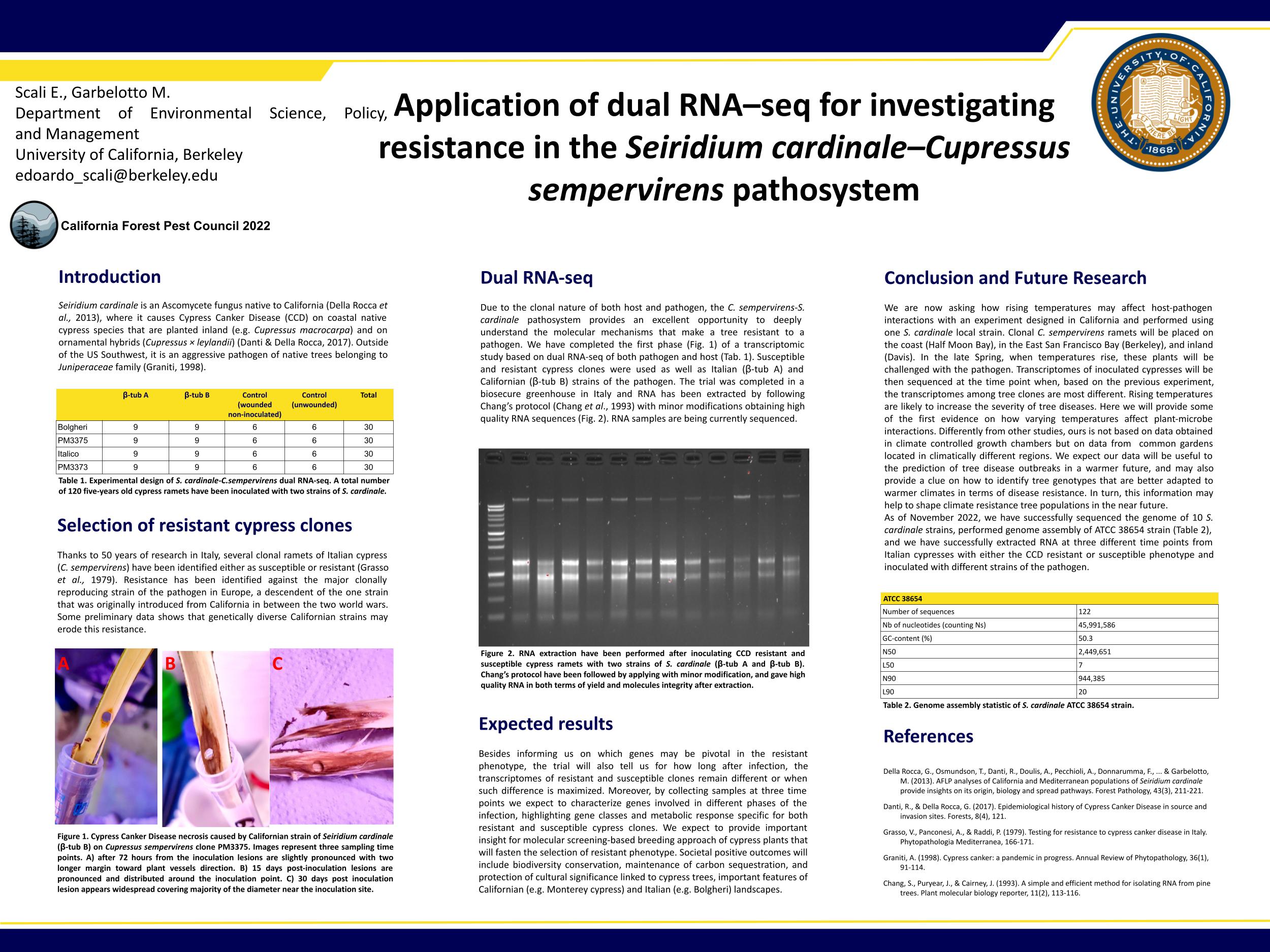Poster: Application of dual RNA–seq for investigating resistance in the Seiridium cardinale–Cupressus sempervirens pathosystem
Date:
This poster illustrates the application of Dual-RNA seq to test gene expression differences in reststant and susceptible cypress plants when inoculated with the pathigen Seiridium cardinale.
Cypress Canker Disease (CCD) is a threat for conservation of plants belonging to the Juniperaceae and Cupressaceae family. Ascomycetes fungus Seiridium cardinale is the causal agent native from California, where it cause mortality of coastal native cypress species that are planted inland (e.g. Cupressus macrocarpa) and on ornamental hybrids (Cupressus × leylandii). This pathogen has been spread to all continents, and after more than 50 years from its first introduction in Europe cypress clones have been selected based on CCD-resistance characteristics conducting symptomatology observation-based trials after inoculating cypress clones with S. cardinale. Aim of our research is to investigate host-pathogen molecular interaction by selecting the CCD pathosystem as a forest pathology case study. With this poster, we are going to present the next actions and future experiments that will be conducted in order to provide new insight on this pathosystem. Application of molecular techniques will allow us to obtain relevant information by applying comparative genomics and host-pathogen dual RNA-seq. Moreover, in order to understand the effect of climate changes on this pathosystem, we are conducting an experiment in which we will assess the effect of three different temperature settings on CCD host-pathogen interaction. We expect to obtain significant results that will help improve phenotype breeding technique, discovery of resistance- or susceptibility- related gene sets, environmental and cultural conservation of landmark cypress trees.

